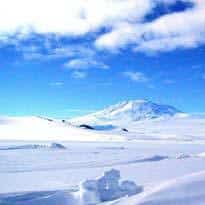If you thought it was cold in the UK this Christmas, spare a thought for explorer Sir Ranulph Fiennes and his team who are preparing to cross the Antarctic in temperatures as low as -90°C.
As they do so, however, they may take some comfort from the portable Carestream DRX-Transportable medical imaging system that will accompany them on the nearly 4,000 kilometre journey.
The medical imaging system will be on hand to provide diagnosis in case of medical emergencies.
Dr Rob Lambert is the team doctor who is accompanying the expedition. He said the most likely need for this equipment would be for imaging potential fractures after injuries.
“These could occur in any team member, but perhaps are most likely in the mechanics, who will be working around heavy machinery, or the skiers who may be at risk of crevasse falls,” he explained.
Such high risks will exist throughout the expedition, which has been dubbed the coldest journey on earth.
It will be the first ever trans-Antarctic winter expedition and will involve travelling through darkness as well as the far-below zero temperatures.
The six-man ‘ice-team’ will begin their six-month journey from the Russian base of Novolazareskaya (Novo) to Captain Scott’s base at McMurdo Sound via the South Pole on the equinox of 21 March 2013.
The DRX-Transportable is an all-in-one solution specifically designed for use in the field. The system includes the wireless detector, electronics, wireless access point and a tablet PC and is small and light, which is important when space and weight are at a premium.
“Most importantly, we do not have the facilities for darkroom processing of analogue images, so we are dependent on having a suitable digital system,” Dr Lambert said.
He added that various permanent bases such as the South Pole have some medical facilities, but the expedition will be a long way away from these for most of the time.
“Depending on the phase of the expedition, the nearest proper hospital is likely to be in either South Africa or New Zealand; however, medical evacuation by air is virtually impossible during the Antarctic winter.”
SA Agulhas set sail from London on 6 December carrying the expedition members and their equipment to Antarctica. The ship will tie up alongside the ice edge on the Lazarev Sea coast, Queen Maud Land in Eastern Antarctica around mid-January 2013.
Carestream Health have loaned the equipment whilst their UK distributor, BCF Technology, has donated the source generator for X-ray capture.

